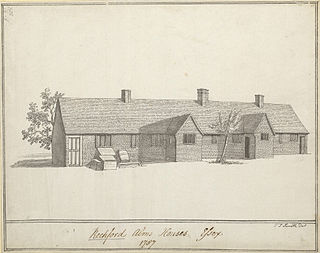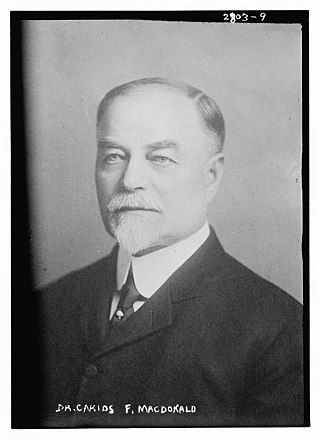Works
| | This section is empty. You can help by adding to it. (February 2022) |
John B. Chapin | |
|---|---|
| Born | 1829 |
| Died | January 17, 1918 |
| Nationality | American |
| Alma mater | Williams College |
| Scientific career | |
| Fields | Psychiatry |
John B. Chapin (John Basset Chapin) M.D. (1829-1918) was an American physician and mental hospital administrator. He was an advocate for the removal of mentally ill patients from the almshouses in New York State to a hospital setting and helped to pass a state law that provided hospital care for the patients. [1]
John B. Chapin was born 4 December 1829 in New York City, son of William Chapin and Elizabeth Bassett. Chapin’s father was interested in the care of the blind, and he moved the family from New York to Pennsylvania, and then to Columbus, Ohio, where his father became director of the Institution for the Blind. In 1849, Chapin entered the Western Reserve College (Ohio). After a year, he transferred to Williams College (Massachusetts) and received the A.B. degree in 1850.
Chapin began his medical career under Dr. John Swett, an attending physician at New York Hospital. (Chapin’s maternal great grandfather had been a hospital governor and a charter member). In 1852, Chapin was a member of the medical staff and attended lectures at Jefferson Medical College in Philadelphia. In 1853, he received his medical degree. He was named house physician at a New York Hospital in 1854. [2]
On completion of his training at the New York Hospital, he joined the medical staff of the State Lunatic Hospital in Utica, New York, then the only public mental hospital in the state. He worked there for four years. From 1858 to 1860, he organized and managed an institution for the blind in St. Louis, Missouri. He returned to Canandaigua, New York to practice at Brigham Hall, a private mental hospital.
By the mid-nineteenth century, the New York State Medical Society was interested in the care of insane people in the counties’ almshouses. Existing laws and practices provided that people who had been insane for a year or more could be committed to local almshouses by the state’s courts, where there was little medical care and poor living conditions. The New York State Legislature passed a law that courts could appoint a physician in each county to visit the almshouses and to report to the state Legislature on the insane confined there. The reports were sent to the New York State Medical Society, which urged the state Legislature to provide a hospital for the mentally ill patients. In 1865, the Legislature authorized such an institution and mandated that insane people would no longer be committed to counties’ almshouses. [3]
Chapin was appointed by the New York State Governor to a committee to select a site for the new facility. Chapin was responsible for planning the construction and chose to create a segregated facility with access to farm facilities for patient occupational therapy. The Legislature appointed a Board of Trustees which elected Chapin as its first superintendent. He remained in the post until 1884. The new hospital led in the care of chronic mentally ill people.
In 1884, following the death of Dr. Thomas Kirkbridge, the first physician-in-Chief of the Department of the Insane of the Pennsylvania Hospital, Chapin was named the new chief physician and remained there for 23 years. He authorized the building of new facilities to accommodate a growing patient population; the opening of a dispensary for treating incipient cases; and the instituting of new practices to improve patient care. [4] He retired in 1911 and spent his last years at his home in Canandaigua, New York.
Chapin received numerous honors during his active years including L.L.D. degrees from Williams College and Jefferson Medical College. He was an honorary member of the Medical Psychological Association of Great Britain and Ireland, and the Société de Médicine Mentale de Belgium. He was an active member of the American Medico-Psychological Association (now the American Psychiatric Association) and was president from 1888 to 1889.
Chapin died on January 17, 1918, at his home in Canandaigua, New York, surrounded by his children. [5]
| | This section is empty. You can help by adding to it. (February 2022) |

Dorothea Lynde Dix was an American advocate on behalf of the indigent mentally ill who, through a vigorous and sustained program of lobbying state legislatures and the United States Congress, created the first generation of American mental asylums. During the Civil War, she served as a Superintendent of Army Nurses.

An almshouse was charitable housing provided to people in a particular community, especially during the Middle Ages. They were often targeted at the poor of a locality, at those from certain forms of previous employment, or their widows, and at elderly people who could no longer pay rent, and are generally maintained by a charity or the trustees of a bequest. Almshouses were originally formed as extensions of the church system and were later adapted by local officials and authorities.

Pennsylvania Hospital is a private, non-profit, 515-bed teaching hospital located in Center City Philadelphia and is part of the University of Pennsylvania Health System. Founded on May 11, 1751, by Benjamin Franklin and Dr. Thomas Bond, Pennsylvania Hospital is one of the earliest established public hospitals in the United States. It is also home to America's first surgical amphitheatre and its first medical library. The hospital's main building, dating to 1756, is a National Historic Landmark.

The Blockley Almshouse, later known as Philadelphia General Hospital, was a charity hospital and poorhouse located in West Philadelphia. It originally opened in 1732/33 in a different part of the city as the Philadelphia Almshouse. Philadelphia General Hospital closed in 1977.

Thomas Story Kirkbride was a physician, alienist, hospital superintendent for the Institute of the Pennsylvania Hospital, and primary founder of the Association of Medical Superintendents of American Institutions for the Insane (AMSAII), the organizational precursor to the American Psychiatric Association. Along with Benjamin Rush he is considered to be the father of the modern American practice of psychiatry as a specific medical discipline. His directive and organization of institutions for the insane were the gold-standard of clinical care in psychiatry throughout the 19th century.
The Association of Medical Superintendents of American Institutions for the Insane, also known as The Superintendents' Association, was organized in Philadelphia in October, 1844 at a meeting of 13 superintendents, making it the first professional medical specialty organization in the U.S.

Norristown State Hospital, originally known as the State Lunatic Hospital at Norristown, is an active state-funded psychiatric hospital located outside the city of Philadelphia in suburban Norristown, Pennsylvania. It was originally designed between 1878 and 1880, by the local firm of Wilson Brothers & Company; of which, the original structure was set in a red brick Victorian High Gothic motif. It remains active for its originally clinical intention, and currently serving Bucks County, Chester County, Delaware County, Montgomery County and Philadelphia County, providing clinical services in General Psychiatry and Forensic Psychiatry. Additionally, there are various agencies that sublet state hospital buildings for a variety of psychiatric, residential and social services. These agencies currently make up the majority of services that are offered on the grounds of the hospital.

Carlos Frederick MacDonald, M.D. was a psychiatrist, and the chairman of the New York State Commission in Lunacy from 1880 to 1896. He was involved in the design of the first electric chair and examined Leon F. Czolgosz, pronouncing him sane enough to be executed in the electric chair after the assassination of President William McKinley in 1901. He was President of the American Psychiatric Association from 1913 to 1914. He was an expert witness at the trials of Harry Thaw and Harrison W. Noel.

The lunatic asylum or insane asylum was an early precursor of the modern psychiatric hospital.

Sir John Charles Bucknill was an English psychiatrist and mental health reformer. He was the father of judge Sir Thomas Townsend Bucknill QC MP.
Rufus Wyman (1778–1842) was an American physician. He was the first physician and superintendent of the Asylum for the Insane, renamed in 1823 to McLean Hospital, part of the Massachusetts General Hospital system, and the first mental hospital in the state.
John Curwen (1821–1901) was Superintendent of the first public mental hospital in Pennsylvania. He personally knew the thirteen founders of the Association of Medical Superintendents of American Institutions of the Insane (AMSAII), now the American Psychiatric Association. He served as secretary-treasurer of the Association for 34 years (1856–1890).

Charles Karsner Mills, M.D. was an American physician and a pioneer in neurology. He founded the first neurology department in a general hospital in the United States at the Philadelphia General Hospital in 1877 and served as chief of neurology at the Hospital of the University of Pennsylvania. He was a professor of neurology at the University of Pennsylvania from 1877 to 1915. He founded the Philadelphia Polyclinic and taught there as professor of diseases of the mind and nervous system from 1883 to 1898. He led major reforms to psychiatric hospitals in the Philadelphia area including the closing of the Blockley Almshouse and the construction of the Philadelphia General Hospital and Byberry Hospital for Mental Diseases. He published over 300 scientific papers on neurology topics including cerebral localization, electrotherapeutics, aphasias and the effects of tumors in the central nervous system. In 1900, he first described a case of ascending paralysis, a rare motor neuron condition that has become known as Mills' syndrome.

Albert Moore Barrett, M.D. (1871-1936), an American physician, was professor of psychiatry at the University of Michigan, and credited with the establishment of the first psychiatric hospital within a university.
Samuel Warren Hamilton, M.D. (1878-1951) was an American physician and psychiatrist who was an expert in the organization of mental hospitals.
Owen Copp, M.D. (1858–1933) was an American physician and a psychiatric administrator. He was president of the American Psychiatric Association from 1921 to 1922, and proposed a progressive program in mental health in the United States.
George Alder Blumer, M.D. (1857-1940) was a physician, a mental hospital administrator, and a journal editor. He was a leader in the provision of humanitarian care for mental hospital patients.

Thomas William Salmon, M.D. (1876-1927) was a leader of the mental hygiene movement in the United States in early twentieth century.

Oregon Hospital for the Insane was a facility constructed in the city of Portland, Oregon, USA by medical doctors J. C. Hawthorne and A. M. Loryea. Launched in 1859 as Oregon Hospital, the facility later came to specialize in the treatment of mental illness and served as the de facto insane asylum for the state of Oregon under contract with the Oregon Legislature beginning in 1861.

The John G. Kerr Refuge for the Insane was founded by the Presbyterian medical missionary, John Glasgow Kerr in Canton, China in 1898. The hospital was the first facility in China dedicated towards the treatment of mental illness, and was expanded up to 500 beds, operating until 1937.